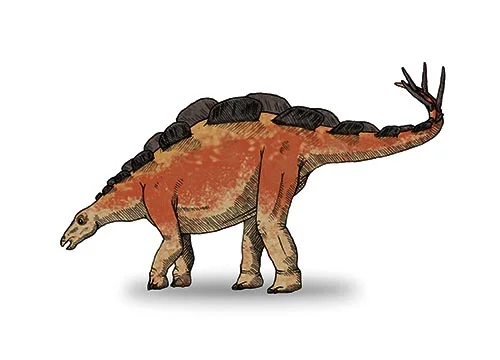Wuerhosaurus (Wuerho lizard)

Where-ho-sore-us
Dong Zhiming - 1973
Herbivore
Estimated 6-7 meters long
Sauropod
W. homheni (type), W. ordosensis
China, Xinjiang - Tugulu Group, Inner Mongolia - Ejinhoro Formation
Late Jurassic, 160 million years ago
Wuerhosaurus Facts
Wuerhosaurus is a genus of stegosaur dinosaur that lived during the Late Jurassic period, approximately 160 million years ago, in what is now China. Its name “Wuerho lizard” refers to the city of Wuerho, near where its fossils were discovered.
Wuerhosaurus was a medium-sized stegosaur, measuring about 6-7 meters (20-23 feet) in length and weighing up to 2-3 tons. Like other stegosaurs, it had a row of bony plates along its back and a pair of spikes on its tail that may have been used for defense against predators. Its head was relatively small and had a beak-like structure for biting off vegetation.
One of the most distinctive features of Wuerhosaurus was the presence of large shoulder spikes, or “spine tables”, which projected out to the sides of the animal. These spikes, which could be up to 1 meter (3.3 feet) long, were likely used for defense against predators or for intraspecific combat during mating season.
The fossils of Wuerhosaurus have also provided important insights into the evolution of stegosaurs. They show that Wuerhosaurus was more advanced than earlier stegosaurs, but less advanced than later forms such as Stegosaurus. For example, Wuerhosaurus had smaller and flatter plates on its back than Stegosaurus, and its tail spikes were shorter and more widely spaced.
Overall, Wuerhosaurus is an important and interesting dinosaur that has contributed greatly to our understanding of the evolution and diversity of stegosaurs.



